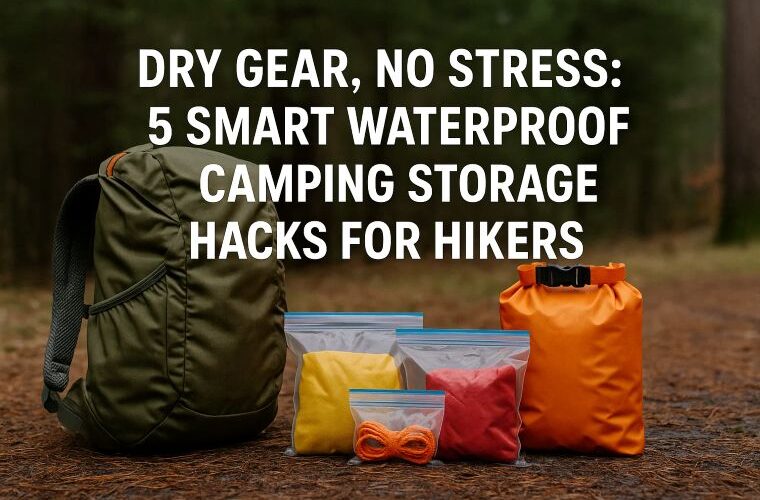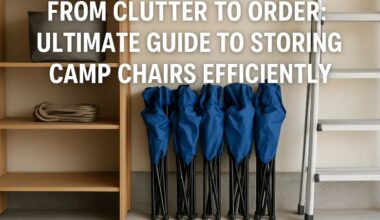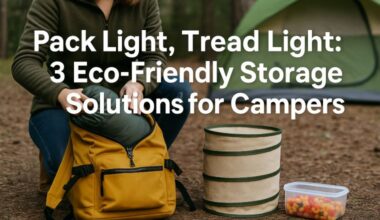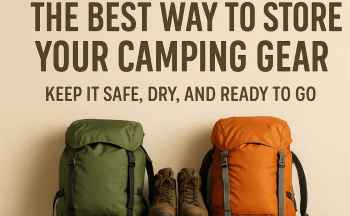There’s nothing worse than waking up to soggy socks, a damp sleeping bag, or your food stash soaked from unexpected rain. Regardless of whether you’re going out for a weekend escape or on a serious backcountry trek, keeping your gear dry is non-negotiable.
And no, it’s not just about tossing everything into a trash bag and hoping for the best. It is taking conscious steps to ensure your belongings remain dry to the best of your abilities.
When you head out into the wild, keeping your gear dry isn’t just about comfort; it’s about safety and making your gear last. Wet gear can lead to cold, discomfort, and even dangerous situations like hypothermia.
And note that moisture ruins equipment, making it less effective or useless over time. That’s why waterproof camping storage solutions are essential parts of any outdoor adventure.
They protect your supplies from rain, splashes, and accidental spills, ensuring you stay dry no matter what the weather throws at you. Let’s take a look at some waterproof camping storage hacks and how we can stay dry and camp happy.
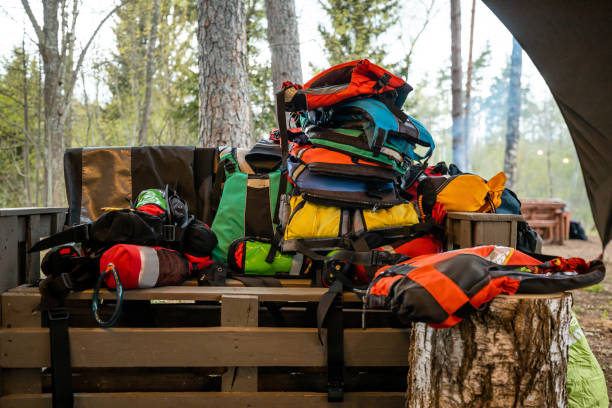
The Fundamentals of Waterproof Camping Storage
Understanding Waterproof vs. `Water-Resistant
Many campers mix up waterproof with water-resistant. Water-resistant gear can handle some light rain or splashes, but it’s not built for heavy rain or submersion.
Waterproof gear, on the other hand, is designed to keep out all water, even in severe weather conditions. If you’re camping in heavy rain or near water, you need waterproof camping storage, not just water-resistant.
Why Waterproofing Your Gear Matters
When you’re outdoors, the weather doesn’t always play fair. Sudden rain while hiking, morning dew before the sun rises, crossing rivers when sightseeing, or even just condensation inside your tent can leave your gear damp or ruined.
Water damage can affect electronics, weaken fabrics, and even spoil your food. Good waterproof storage isn’t just about comfort; it’s about safety, durability, and peace of mind.
Key Features to Look for in Waterproof Storage
To pick the best waterproof storage, focus on features like
- Seam sealing: Looks simple but prevents leaks at joints.
- Roll-top closures: Easy to seal tightly and reliable against water.
- Waterproof zippers: Designed to keep water out even in tough conditions.
- Durable fabrics: strong and resistant to tears, punctures, and abrasions.
Types of Waterproof Storage
Not every label that says “waterproof” actually performs its duty of protecting your camping items from water. These are items that actually work as waterproof storage.
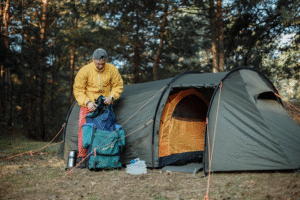
Dry Bags:
These are your best friends when it comes to storing clothing, sleeping gear, or electronics. Go for roll-top models with sealed seams. They’re lightweight, tough, and truly watertight when closed correctly. Nothing screams waterproof camping storage more than this!
Dry bags are lightweight, flexible, and perfect for keeping clothes, electronics, and snacks dry. They’re simple to use: pack your gear, roll the top closed, and secure the buckle.
These are especially useful in kayak camping or river trips where splashes and accidental dips are common. If you get your dry bag wet, your gear stays dry; that’s the magic
Hard Shell Waterproof Containers:
Ideal for storing food, first aid kits, or anything you really can’t afford to get wet. They’re more rigid but super reliable in wet conditions.
Hard and soft containers come with their perks. Hard cases provide extra protection against crushing or punctures and often feature locks for security. Soft cases are easier to pack into backpacks or luggage.
Look for containers made of durable plastics or rubber, with tight seals and locking lids to keep water out. Stacking compatible cases saves space and organizes your gear efficiently. These serve as great waterproof camping storage items.
Backpacks with Waterproof Liners:
Even if your backpack isn’t waterproof itself, adding a liner or pack cover can go a long way. Some liners even double as emergency flotation devices in a pinch.
A good waterproof duffel or backpack keeps your gear dry during transit. These packs typically feature sealed seams, waterproof fabrics, and secure closures.
When packing, use compression bags or smaller organizers inside to prevent shifting. Properly packed, these bags prevent leaks and keep water out even on rough terrain or during sudden storms.
Ziploc-Style Bags for Small Items:
These are great for your phone, documents, matches, or maps. Don’t rely on them entirely in heavy rain, but they’re excellent for added protection. These make for a good waterproof camping item.
Innovative and DIY Waterproof Solutions
If you like custom solutions, try waterproofing household items like plastic storage bins or resealable bags. Use sealants or specialized liners to improve protection.
Investing in waterproof sprays for fabrics can also boost the water resistance of gear you already own. Creativity can help make everyday items a makeshift waterproof camping solution; just test them first.
Smart Packing Tips
Waterproof storage is only as good as how you use it. A few tips:
- Double up: For sensitive gear like your phone, use a dry bag inside a waterproof compartment. It sounds like overkill, but it works.
- Keep items elevated: Inside your tent, make sure your gear is off the ground. Even waterproof bags can collect condensation if sitting in pooled water.
- Organize by priority: Things you need quick access to like your rain jacket or snacks, should go in more accessible but still water-resistant pockets.
What to Avoid
- Don’t rely solely on garbage bags or low-quality plastic covers. They tear easily and won’t hold up in real outdoor conditions.
- Avoid storing wet items with dry ones. Always separate damp clothes from your other gear, even if everything’s technically in a “waterproof” container.
Recommended Add-ons
- Silica gel packs: These help absorb moisture inside sealed containers.
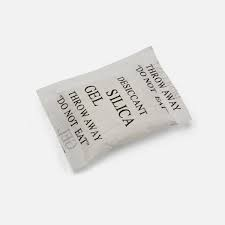
- Compression dry sacks: Save space while keeping things bone dry.
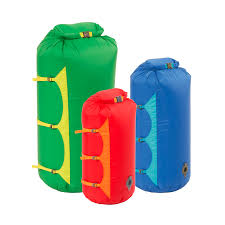
- Tent vestibule or tarp: A simple cover at camp can go a long way in preventing moisture from creeping in and make a good waterproof camping storage material.
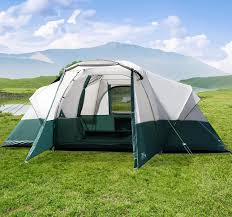
Conclusion
Staying dry doesn’t have to be a battle. With the right waterproof camping storage paired with a few smart habits, you can keep your gear safe, your trip stress-free, and your mornings blissfully free of wet surprises.
Invest in the right tools and pack like it might rain because chances are, it will.
Ready to gear up? Start small with a couple of dry bags and upgrade from there. Your next adventure and your dry gear will thank you.
Found this blog helpful and would like to get more helpful tips about waterproof camping storage. Don’t forget to subscribe.
